Essential Tips for Dryer Vent Maintenance
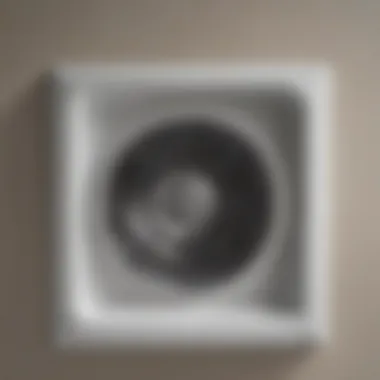
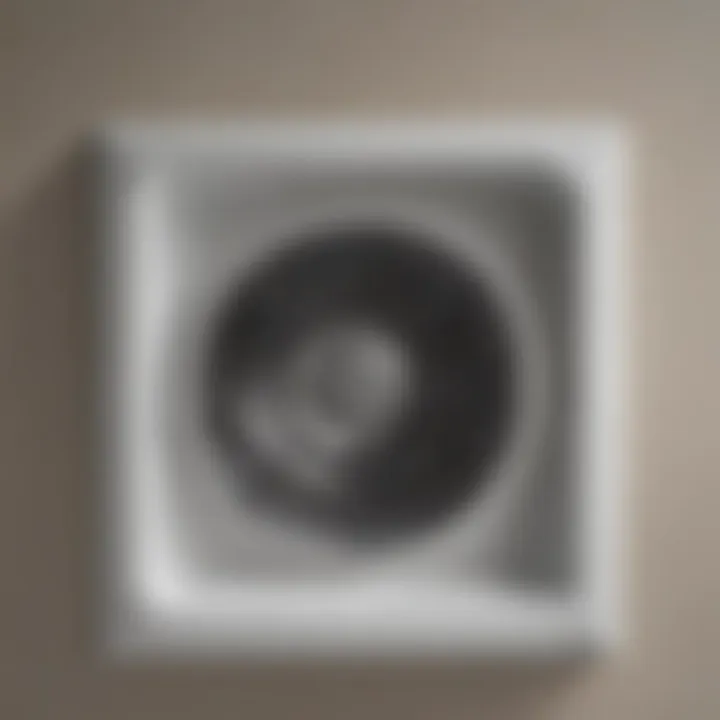
Intro
Maintaining a clean dryer vent system is vital for homeowners. Yet, it is often neglected, leading to significant risks such as fire hazards and inefficiency in drying clothes. By understanding what a clean dryer vent entails and how to ensure it remains free from clogs, homeowners can safeguard their property and prolong the lifespan of their appliances.
Regular maintenance not only enhances safety but also boosts energy efficiency. A clean dryer vent helps the dryer operate effectively, which means less energy consumption. Thus, knowing the methods for cleansing the vent is crucial. Moreover, recognizing warning signs that indicate a clog can prevent larger issues down the road.
This guide walks through the critical aspects related to dryer vent maintenance. It covers essential cleaning methods, signs to watch for, and preventative measures that can be implemented. By engaging with this guide, you will gain useful insights to protect your home and appliances.
Understanding Dryer Vent Systems
Understanding how a dryer vent system works is crucial for homeowners who are looking to enhance safety and efficiency in their homes. A dryer vent system connects the appliance to the exterior of the home, facilitating the effective expulsion of hot air and moisture produced during the drying cycle. Neglecting this system can lead to several severe issues, including fire hazards and inefficiency.
A clear comprehension of the components and functionality of dryer vent systems allows homeowners to identify potential problems before they escalate.
Components of a Dryer Vent System
A properly functioning dryer vent system comprises several essential components:
- Dryer: The appliance itself, where the drying process occurs.
- Vent Pipe: This pipe transports hot air and lint from the dryer to the outside. Common materials include aluminum and rigid metal.
- Venting Hood: This exterior cover prevents outside elements, such as rain and snow, from entering the vent.
- Duct Connector: This connects the dryer to the vent pipe, ensuring a proper seal.
- Clamp: Used to secure the duct connector, providing stability to the connection.
Each part plays a vital role in ensuring that the venting system operates correctly. Over time, lint accumulation can impede airflow, leading to overheating and potential fires.
Functionality of Dryer Vents
The primary function of dryer vents is to remove moist air from the drying process. Here is a simple explanation of this functionality:
- As the dryer operates, it generates heat to evaporate moisture from the clothes.
- The moist air, carrying lint and fibers, is expelled through the vent pipe.
- The vent hood allows this air to exit the home while preventing the entry of outside debris.
A well-maintained dryer vent system not only contributes to the safety of a home but also improves energy efficiency. When the airflow is unobstructed, dryers take less time to do their job, which can lead to decreased energy bills and prolonged appliance life. Regularly inspecting each component of the dryer vent system becomes imperative for the homeowner.
The Risks of Neglecting Dryer Vent Maintenance
Neglecting the maintenance of dryer vent systems can result in severe consequences. Many homeowners may not realize thecritical risks associated with clogged or poorly maintained dryer vents. Understanding these risks is essential for making informed decisions about the upkeep of home appliances. This section will delve into several key risks: fire hazards, increased energy costs, and the overall impact on dryer efficiency.
Fire Hazards Associated with Clogged Vents
Clogged dryer vents are a significant fire hazard. Lint accumulates inside the vent over time, creating a highly flammable material. When a dryer operates, it generates heat. If the vent is blocked, this heat cannot escape and will build up inside the machine and venting system. According to the U.S. Fire Administration, thousands of dryer fires are reported annually, many due to neglected vent systems. The danger escalates if the lint ignites, potentially spreading throughout the home. Homeowners must prioritize regular inspections and cleanings to minimize these risks.
Almost 3,000 dryer fires occur each year, highlighting the necessity of nuturing dryer vent systems for safety.
Increased Energy Costs
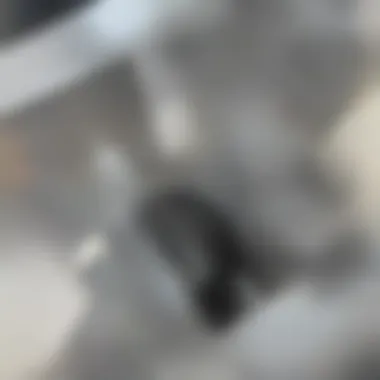
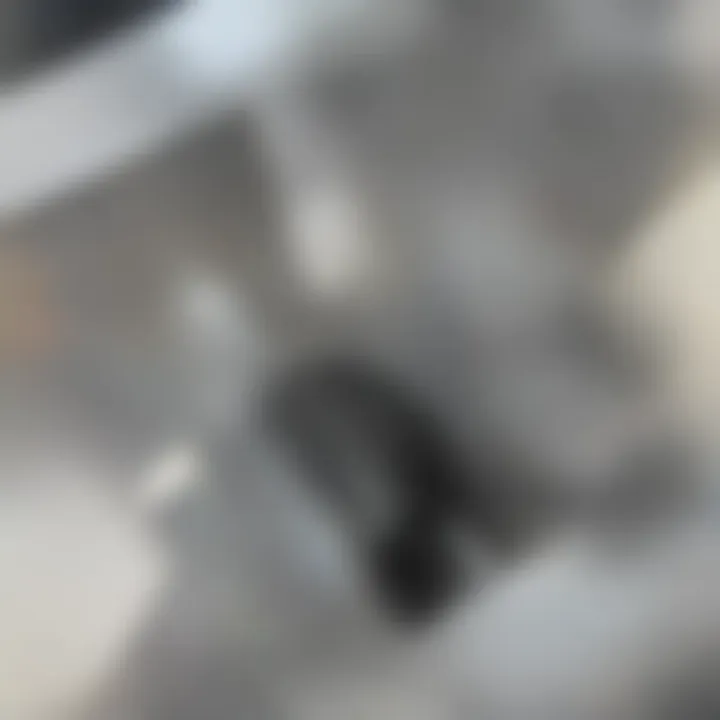
Another consequence of failing to maintain dryer vents is the significant rise in energy costs. When vents are clogged, dryers must work harder and longer to achieve the same results. This inefficiency translates into higher energy bills. Over time, this can lead to substantial economic waste. By keeping the dryer vent clean, homeowners can ensure the appliance operates at peak efficiency. Investing time in maintenance pays off in reduced energy consumption and costs.
Impact on Dryer Efficiency
The efficiency of a dryer is directly impacted by the condition of its vent system. A clean dryer vent allows for proper airflow, reducing drying times and improving functionality. In contrast, a clogged vent can lead to increased drying times, meaning the dryer runs longer, which can lead to not just higher bills, but also wear on the appliance itself. This wear can reduce the overall lifespan of the dryer, resulting in premature replacements. Regular dryer vent maintenance helps preserve appliance integrity and boosts performance.
Signs Your Dryer Vent Needs Cleaning
Recognizing when your dryer vent requires cleaning is essential for maintaining the efficiency and safety of your dryer. Ignoring such signs can lead to various issues, ranging from increased energy costs to serious fire hazards. Therefore, being aware of the indicators that suggest it's time to take action will help in safeguarding your home and enhancing the effectiveness of your dryer. Here are the core signs you should watch for:
Longer Drying Times
If you notice your clothes are taking significantly longer to dry, this is often a prime indication that your dryer vent is clogged. A clean dryer vent should facilitate the quick passage of moist air outside. When lint accumulates within the vent, it obstructs this airflow. As a result, your dryer must work harder to eliminate moisture from clothing, which can double or even triple the usual drying time.
Ensuring you keep your dryer ventilated is vital. Apart from being an inconvenience, longer drying times suggest your dryer is operating less efficiently, increasing energy consumption. This inefficiency can lead to higher utility bills and potentially reduce the lifespan of your appliance.
Overheating Appliances
Another red flag for poor venting is when your dryer feels excessively hot during operation. A dryer vent should allow heat to escape, maintaining a moderate temperature on the exterior. If the machine itself becomes hot to touch, it indicates that air and moisture are trapped inside due to lint build-up.
Not only does overheating put your dryer at risk of functional failure, but it also poses a significant fire hazard. The combination of lint, heat, and restricted airflow creates an environment ripe for combustion. It's crucial to monitor your dryer’s temperature and take immediate action if overheating becomes apparent.
Unpleasant Odors
Foul smells emanating from your dryer are often a sign that your vent might need attention. A clean vent system allows for proper ventilation of heated air, thereby preventing moisture build-up that can lead to mold and mildew. When moisture cannot escape, it encourages the growth of unpleasant odors.
If laundry has a musty scent after being dried, or if you can smell burning lint, it is essential to investigate further. This situation is not only bothersome, but it can also affect the quality of your clothing. Cleaning the dryer vent will eliminate odor and restore freshness to your laundry.
"Regular maintenance of your dryer vent system is crucial to prevent hazards and maintain efficiency."
Overall, being vigilant about these signs can save you time, money, and ensure the optimal operation of your dryer. Actively engaging with these indicators fosters a proactive approach to appliance maintenance.
Methods for Cleaning Dryer Vents
Maintaining a clean dryer vent system is crucial not only for the performance of your dryer but also for safety and efficiency in your home. Dryer vents can quickly become clogged with lint and debris, leading to significant risks, including fire hazards and increased energy costs. Cleaning methods can be categorized into two main types: DIY cleaning techniques and professional cleaning services. Understanding these methods allows homeowners to make informed decisions about their dryer vent maintenance strategies.
DIY Cleaning Techniques
For many homeowners, handling the cleaning of their dryer vents themselves is a practical option. Not only can this save on costs associated with hiring professionals, but it also offers a sense of ownership over home maintenance. Here are several effective DIY cleaning techniques:
- Use a Vacuum: Begin by disconnecting the dryer from the vent. Use a vacuum cleaner with a long hose attachment to remove lint from the vent and ductwork. This method can capture most of the visible debris that has accumulated.
- Brush Cleaning Kits: Available at most hardware stores, brush cleaning kits are specifically designed for dryer vents. They include flexible rods and brushes that allow you to reach deep into the vent system. Follow the instructions provided to ensure thorough cleaning.
- Air Blower or Compressed Air: If lint is stubborn, you can use an air blower. By directing high-pressure air into the vent, you can dislodge lint and debris that has stuck to the walls. Make sure to wear safety goggles to protect your eyes from flying debris.
- Regular Maintenance Schedule: Establish a routine cleaning schedule for your dryer vents. Cleaning them every six months can greatly reduce the buildup. Setting reminders can help keep maintenance at the forefront of your home care routine.
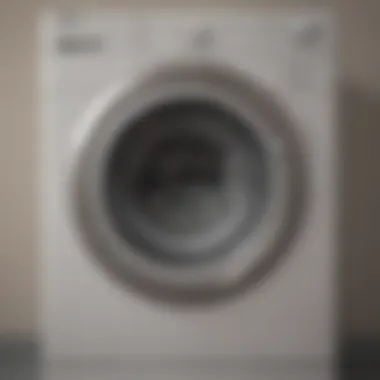
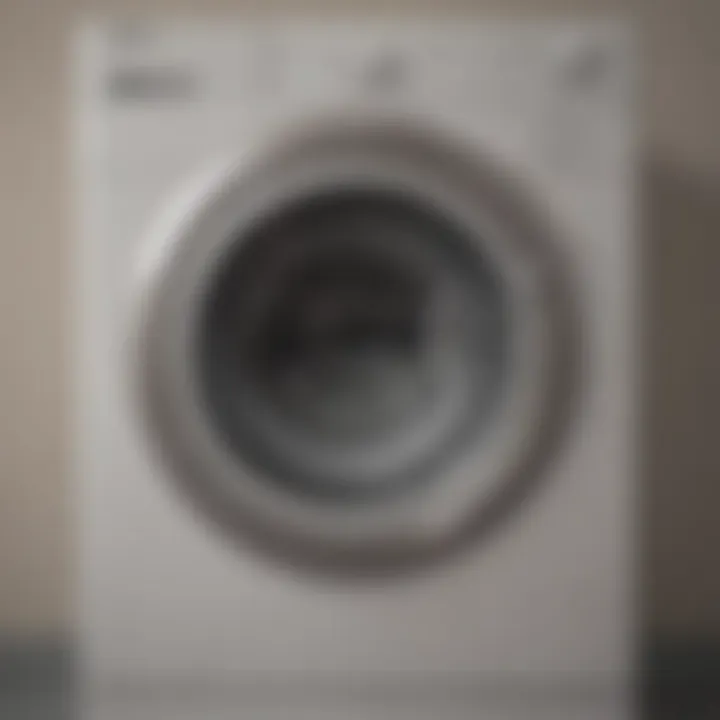
Implementing these DIY techniques not only prolongs your dryer’s lifespan but also enhances the overall efficiency of the appliance.
Professional Cleaning Services
While DIY methods can be very effective, some situations call for the expertise of professionals. Knowing when to call for professional help is key to ensuring your dryer vent remains in peak condition. Here’s why you might consider hiring a professional:
- Specialized Equipment: Professionals typically use advanced tools that may not be available to the average homeowner. Techniques such as rotary brushing and powerful vacuums can remove more extensive buildup, effectively cleaning areas that are difficult to reach.
- Thorough Inspection: A professional cleaning service will also inspect your entire dryer vent system. They can spot issues such as damage, improper installation, or build-up that you might not recognize on your own.
- Time-Saving: Many homeowners lead busy lives. Hiring professionals can save valuable time while ensuring that the work is done correctly.
- Peace of Mind: Knowing that the cleaning has been done by a qualified technician can give you greater peace of mind regarding safety issues associated with clogged vents.
When selecting a professional cleaning service, research their qualifications and customer reviews. Investing in their expertise can provide long-term benefits for your appliance and your home.
"Regular maintenance of dryer vent systems can lead to significant savings in energy costs and reduce the risk of unsafe conditions in the home."
In summary, both DIY cleaning techniques and professional services play important roles in maintaining a clean dryer vent system. Homeowners should weigh the benefits and limitations of each method to find a solution that best suits their needs.
Preventive Measures for Dryer Vent Maintenance
Preventive measures for dryer vent maintenance play a crucial role in ensuring the safety and efficiency of your home's laundry system. By taking actionable steps, homeowners can minimize the risks associated with clogged dryer vents, thus protecting their property and prolonging the life of their appliances. Regular maintenance offers several benefits. It not only enhances the performance of the dryer but also helps in reducing energy consumption, ultimately saving money on utility bills.
Regular Inspections and Cleanings
Routine inspections and cleanings are essential for maintaining a clear pathway for air within the dryer vent system. Regular checks help to identify blockages early, preventing buildup that can lead to hazardous situations. Most experts suggest that homeowners should conduct inspections at least once a year. This allows you to catch any issues before they escalate. During these inspections, look for signs of lint accumulation around the vent opening or behind the dryer.
Moreover, cleaning the vent after every few loads can significantly reduce lint buildup, making the system more efficient. Create a schedule to ensure that maintenance is not overlooked. Following a consistent routine fosters a proactive approach to safety and efficiency.
Use of Lint-Traps
Utilizing lint traps is a fundamental preventive measure that can greatly enhance dryer performance. These traps act as the first line of defense against lint buildup. It is important to clean the lint trap after every laundry load. A clogged lint trap not only affects dryer efficiency but can also result in overheating, leading to fire hazards. Beyond the lint trap located in the dryer, consider installing additional traps in the vent system, especially if it is longer than average. This helps to catch any lint that may bypass the dryer’s internal trap.
"A cleaned lint trap can improve the air circulation, leading to shorter drying times and lower energy costs."
Proper Ventilation Installation
Proper installation of the dryer vent system is a major aspect of preventive maintenance. Ensure that the vent pipe is straight and short while avoiding sharp bends. The smoother the path for the moisture-laden air to escape, the less chance there will be for lint to accumulate. Use rigid metal ducts instead of plastic or flexible plastic ones, as these can collapse and trap lint.
Additionally, ensure that the vent exits to the outside are not obstructed by any external elements like snow or debris. If necessary, use vent covers that automatically open when the dryer is operating, keeping outside debris from entering the vent system.
Taking these preventive measures not only safeguards your home but also maintains the efficiency of your dryer system.
Choosing the Right Dryer Vent Materials
Selecting the appropriate materials for your dryer vent system is essential for ensuring safety, efficiency, and longevity. The choice of materials directly influences the effectiveness of the dryer in expelling heat and moisture, which are byproducts of laundry drying. Furthermore, specific materials can impact maintenance routines, affecting how easily and often the system needs cleaning.


Types of Vent Pipes
Dryer vent pipes come in various types, each offering certain advantages and disadvantages. The most common options include:
- Rigid Metal Ducts: These are often considered the best choice. Rigid ducts are typically made of aluminum or galvanized steel. Their smooth inner surfaces facilitate optimal airflow, reducing lint buildup and enhancing overall efficiency. Moreover, they are quite durable and have a long lifespan.
- Flexible Metal Ducts: Similar to rigid ducts, but these are easier to install in tight spaces. However, their interior is often ribbed, which can trap lint. While they are suitable for short runs, they may require more frequent cleaning compared to rigid options.
- Plastic or Vinyl Ducts: These are generally less durable and are not recommended for dryer vents. They can melt or warp under the heat produced by the dryer and are more prone to lint blockage. Many local building codes may also prohibit their use.
Using the right vent pipe is crucial for both safety and efficiency. Rigid metal ducts outperform other types in preventing lint buildup and reducing fire risks.
Material Durability Considerations
Choosing durable materials for dryer venting systems is vital for long-term performance. Durable materials resist corrosion, warping, and damage from heat, supporting better airflow. Factors to consider include:
- Heat Resistance: Dryer vents must withstand high temperatures. Materials like aluminum and galvanized steel excel in this aspect, ensuring they do not lose their structural integrity over time.
- Corrosion Resistance: Humidity and lint can cause deterioration in some materials. Opting for metal over plastic helps mitigate this risk. Aluminum and stainless steel are excellent choices that provide long-lasting functionality.
- Weight and Flexibility: Lighter materials may be easier to handle during installation but consider whether they maintain airflow under pressure. Rigid options may be heavier but are typically more effective in maintaining a clean vent.
In summary, investing in high-quality materials for your dryer vent system leads to better efficiency and safety, minimizing cleaning needs and extending the lifespan of your appliances.
Legal and Insurance Considerations
Understanding legal and insurance considerations when it comes to dryer vent maintenance is crucial for homeowners. It is not merely about keeping your home safe; it affects liability and financial aspects of homeownership. Knowing and complying with relevant laws can prevent significant legal headaches down the line.
Local Building Codes and Regulations
Each jurisdiction often has specific building codes and regulations concerning dryer vent installations and maintenance. These codes are designed to minimize the risks of fire hazards and promote safety in residential areas. Homeowners must familiarize themselves with local codes, as they can influence requirements regarding the type of materials used in venting systems, the installation methods, and the frequency of maintenance checks. Failure to adhere to these standards can result in fines or even legal liability if a fire occurs due to negligence.
For example, some local governments may stipulate that using flexible plastic vents is forbidden because they are prone to collection of lint, which is a fire risk. Other places might require that vents have certain lengths or degrees of bends, ensuring effective airflow.
Moreover, during real estate transactions, buyers will likely request documentation proving that the dryer vent system meets these local regulations. This might also include proof of regular maintenance, which leads naturally into insurance considerations.
Insurance Implications of Neglected Maintenance
The relationship between negligent maintenance and insurance is critical. Home insurance policies often include clauses that stipulate adherence to safety standards. If you neglect regular cleaning and maintenance of your dryer vent, you could potentially create grounds for a denied insurance claim in the event of a fire. Insurers might argue that failure to maintain the vent system directly led to property damage, thus voiding your policy coverage.
In addition, retaining proof of regular maintenance work can strengthen your position with your insurer. Homeowners can often present these records to illustrate that they took reasonable measures to prevent risks. Not maintaining a clean dryer vent could ultimately translate to higher premiums or loss of coverage, the very opposite of what homeowners seek through their insurance.
"Neglecting dryer vent maintenance can create not just safety hazards, but it might also put your home insurance coverage in jeopardy."
End
Maintaining a clean dryer vent system is of utmost importance. The benefits extend beyond just improving dryer efficiency. First, a clean vent significantly reduces fire risks associated with lint accumulation. This is crucial as dryer-related fires can cause severe property damage and personal injury. Homeowners who regularly maintain their dryer vents also notice lower energy bills. When vents are clogged, dryers must work harder, consuming more electricity during each drying cycle.
Furthermore, a clean dryer vent can enhance the longevity of the appliance. Overheating caused by lint build-up shortens the life of the dryer, leading to costly replacements.
The Importance of a Clean System
A clean system ensures that moisture is effectively expelled from the dryer. This not only improves drying efficiency but also prevents mildew and mold growth in the laundry area. Regular ventilation checks and cleanings can make a significant difference in the overall health of your home environment.
"Regular maintenance of your dryer vent is an investment in your safety and appliance efficiency."
By acknowledging the importance of a clean dryer vent system, homeowners can safeguard their properties and enjoy peace of mind.







